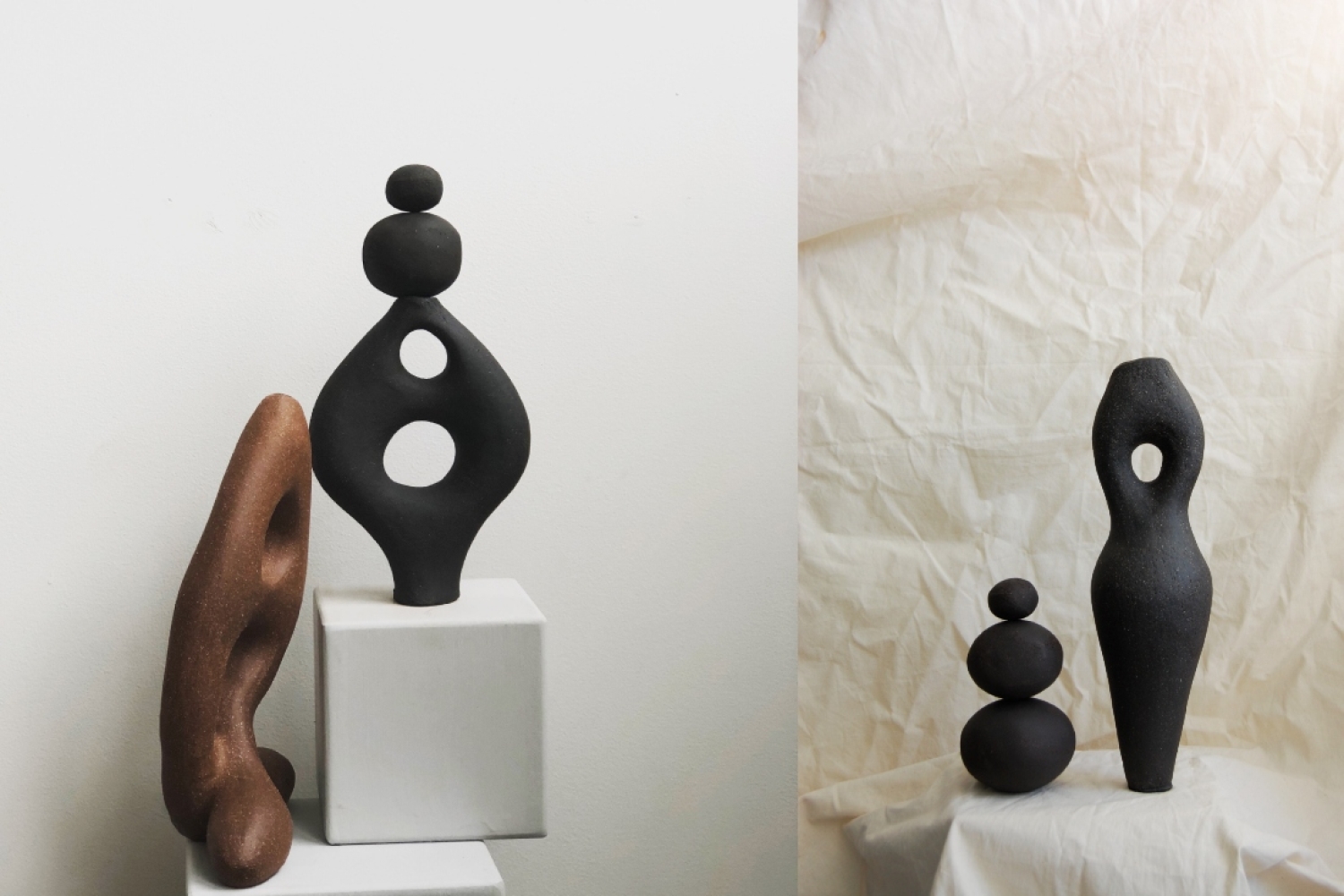

Research scientist and ceramic artist Abid Javed was born in Hong Kong, yet his roots and culture cemented his relationship with Pakistan. He made the switch to the United Kingdom as a teenager, went on to study biochemistry, and continued work as a research scientist while running his ceramic practice alongside. Abid’s attraction towards the arts began early on as he found himself fascinated by all things visual — be it nature, landscapes, paintings, or even theatre. He began drawing from a young age with encouragement at home. He also studied the discipline at school which laid the foundation for his skill set and further helped him gather knowledge about Islamic and 20th century art. Below, the design practitioner tells us more about his sculpting and process.
The Medium
Interestingly enough, during my art and design studies at school, I never pursued ceramics or sculpture art. I was actively painting or drawing. It wasn’t until my PhD years, and at the tail end of it, when I stumbled upon a hobbyist course in ceramics that I began to get more and more invested in those art spaces. With ceramics, it was an instant, instinctive connection with the medium, where it was clay, my hands, some tools and the willingness to make.
With sculptures, it was a lot more cerebral and philosophical as during my PhD in molecular biology, I had the urge to make three-dimensional work inspired by what I was observing under the microscope — to visualise biological narratives and the beauty in forms under the microscopic lens. And thanks to some research and practice in ceramics and the sculpture space, I was able to develop some work and start producing pieces inspired by biological themes.
The Practice
Fundamentally, I strive for simplicity, and the beauty that exists in biological forms and storylines. Nature is the true originator of ideas and I am simply an observer that pulls them out and gives them a platform for people to appreciate and admire. I appreciate that a lot of us recently have become more and more conscious of our surroundings, living spaces, and how to make them better, more habitable. With the practice, the idea is to introduce biology inspired designs and objects into living spaces that elevate them, even if it is just a small change.
Philosophically, I want to take people on a trip round a cellular sculpture garden, with a series of snapshots of biological forms at play — stationary moments that exist at a molecular level. I see molecules as physical molecular bodies with character (very reminiscent of human beings and their social networks) and the vision is to have these molecular bodies co-existing with man — via sculptures or functional objects. Of course I take an abstract approach in my work whereby the shapes take on a more simplified, fluid form instead of detailed, exact replicas of the biological structures.
The Creative Process
Usually, I am working on several ideas at once (thanks to the art of multi-tasking in my research job), and this is sometimes a welcome change where ideas can travel like osmosis from one to another. Almost always, I sketch. If I don’t have it down on paper, I know it will never become physical, so I have to sketch my ideas down in order to have my brain make that connection. For a given idea, there are several sketches which I then iterate and edit until I narrow them down to a few.
Thanks to my research job, I also like to explore out of curiosity. I go to art spaces, exhibitions, galleries, read monographs on various genres of visual arts and the result of these is that my subconscious mind holding all this information sometimes presents itself in some unusual yet useful ways. I normally have client projects ongoing at the same time as personal pieces on the go. For client based work, I aim to work closely via meetings to decide on the forms and surface textures together. This allows me to make the projects more collaborative, ideas driven and fulfilling as sometimes through client discussions, the ideas develop in amazing ways. For personal projects, I start with an idea or a structure I have seen in my biological research work. I then tune into it with an abstract lens, that I then use to sketch out various shapes before I decide on what would work best to produce.
Functionality and Aesthetic
It has been an ongoing learning experience but I have definitely taken a leaf out of traditional Japanese ceramics as well as great design masters like Isamu Noguchi and Bruno Munari who strived to produce work that is at the cusp of sculptural and functional. There is certainly a need for design that is functional yet also artful. Given the complexity in shapes and storylines in biology, I have developed my practice in such a way that I make objects that are simple — in form or function.
I always have both sculptural and functional aspects to the objects I make in mind simultaneously, and sometimes this scale moves more towards one or the other. But primarily, I strive to make work that people find useful yet visually beautiful, and has some form of design purpose that makes living and sensibilities around the objects meaningful.
This article is an all exclusive from our January EZ. To read more such articles, follow the link here.
Words Unnati Saini
Date 31-01-2023